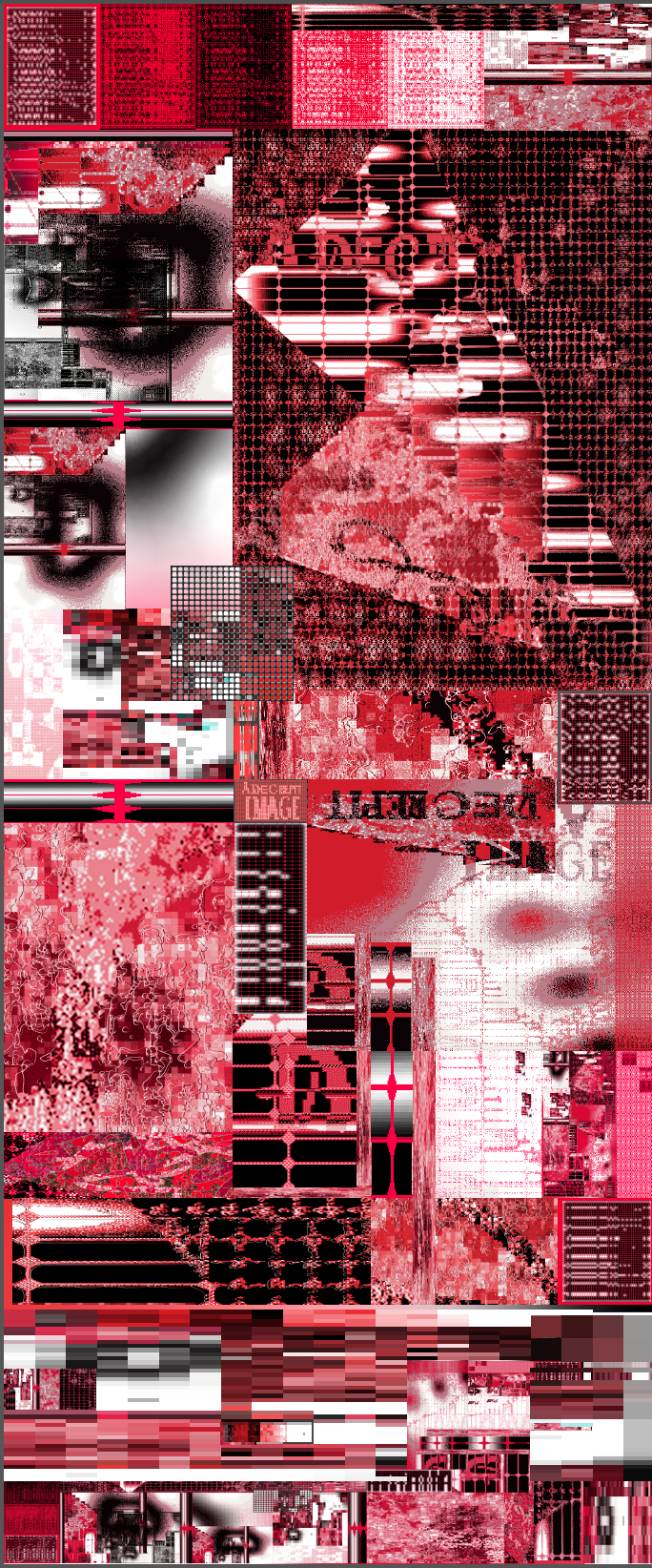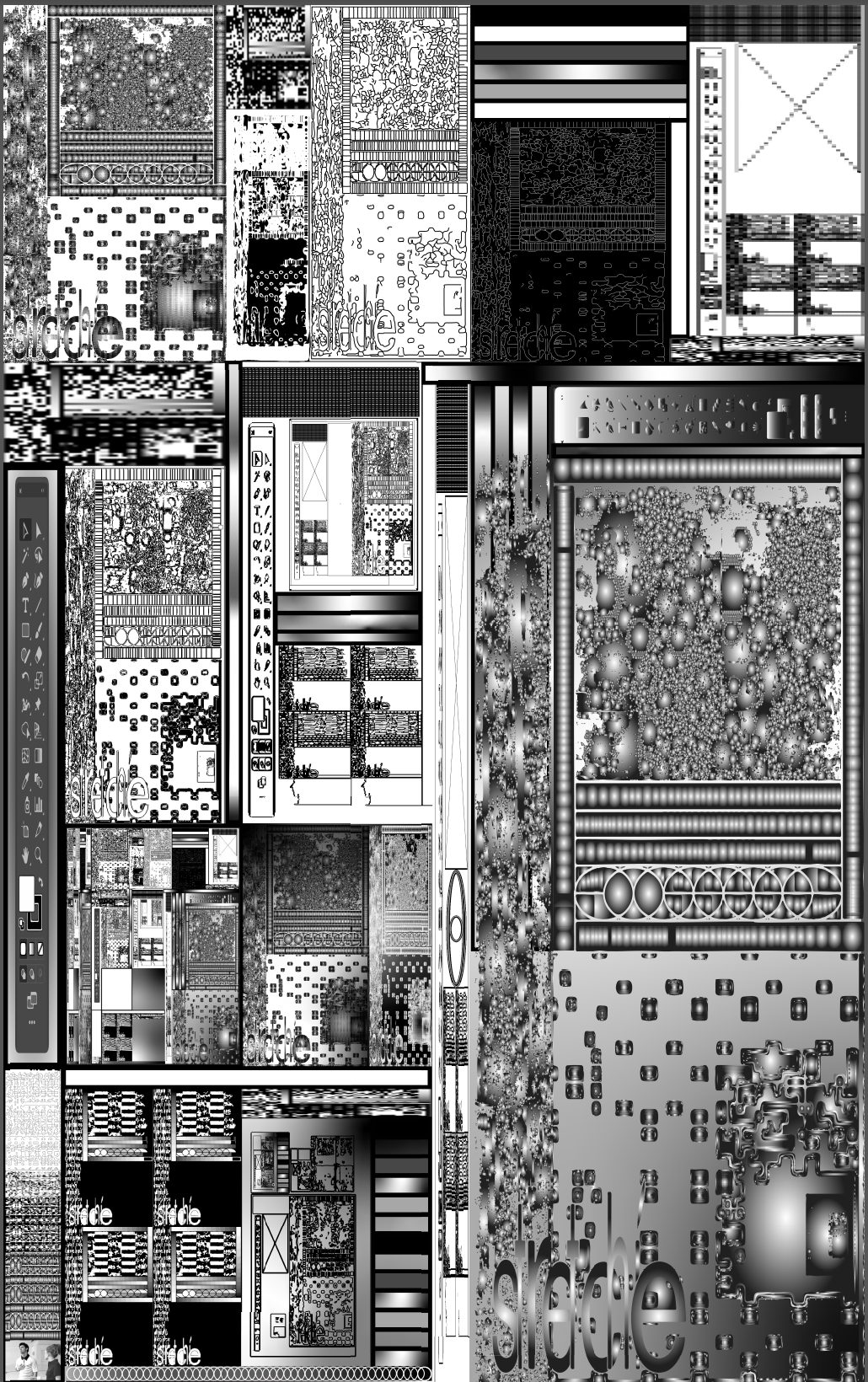The Body Of Work.
Starting and ending this process with a broad form of questioning. Why do I create, and what strange space do I occupy in graphic design? If that space does not exist for me to occupy in the graphic design community, why should it? In a very transparent way, the reason I have always created was only for self-benefit; it is the only necessary action I know of. There is a cycle to my processes; I feel incapable of anything if I am not creating something new. My approach revolves around experimentation, where I learn more from
myself as I create unique images. I make these complicated images not to take what I see for simply that. Through creating, there is an extension of myself; by giving in to tools I know less about, I can create something I could not before. I love to watch images deteriorate in Photoshop because they become something that does not exist in the perfect design world. The destruction, distortion, and bitmapping process reveals something underneath the images. It reveals something not seen in the image and tools we use.
I think of design as high propagation of images and that propagation as something surrounding simply selling something. “Designers are most often taught to reduce ideas to their essence, but in fact, that process too often results in the reduction of the ideas to only one of their parts.” For this reason, I think of a lot of design as exclusive, clear, and simple rather than personal, ambiguous, and
complex, which is a space that I want to foster in Graphic Design. The idea of the multiple reinforces my process of creating images that surround themselves. An additive principle propels my work, whereas most designers may move towards reduction and distilling an idea. I believe the viewer is encouraged to have multiple or alternative reactions by experiencing many.
A video listing the many neologisms influencing the body of work.
These images come from the tiles of a large tapestry. Within them are separate tapestries. They are representative of a different way of creating. They are built of screenshots, small and large, edited images, stretched images from the past, imperfect replication of images through bitmapping, rasterizing, image tracing, and simply pressing the mosaic effect button.
I see the act of this process as a new form of ownership. I see a Bitmap as a deterioration of a pixel, an unfamiliar image, a poor image, instead of being a well-produced image to be Systematically reappearing in the world through a commercial source to propagate the earth. These images being created in commercial processes are a simulacrum of reality. A poor image may not resemble reality, but it is not distilled.



Production of these images has evolved my philosophy as well. The idea of the deterioration of an image, of an image not being a singular thing. Of an idea transforming just by the natural effects of translation. The pixel becomes as honest and vulnerable as the human body and the mind.
As memory, the faults in nature allow a multitude. Allow a complicated identity to come from something more singular. An errant idea is compressed, reproduced, ripped, remixed, copied,
and pasted into other distribution channels. Thrust into digital uncertainty, it ends towards abstraction. One even doubts whether it could be called an image at all. Only digital technology could produce such a dilapidated image in the first place. It is an image. It is something representing a human idea. Processes. It defines most of what we see but in a revealed way. Through degrading, we know how the world is made the same as these vagabonds' trash that washes up on the digital economies' shores.